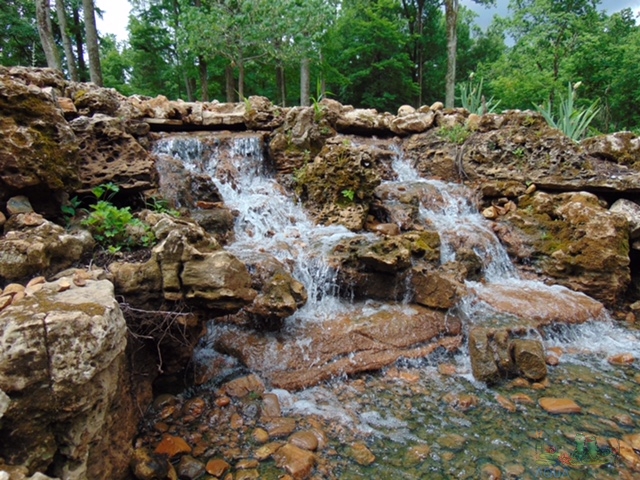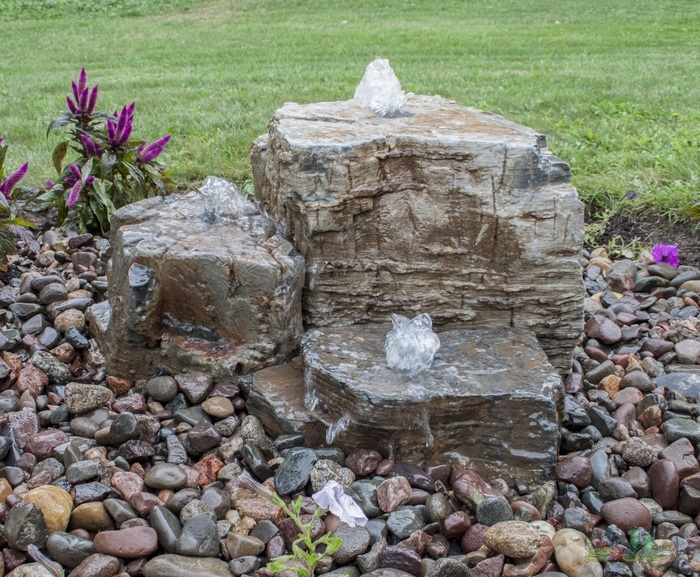How To Choose The Correct Pond Pump
Choosing a pump for your pond or fountain is a crucial step to ensure you maintain proper water movement. Failure to keep the water adequately circulated can result in stagnation, algae buildup, and mosquitoes. In addition, if you have fish, plants, or other aquatic life in your pond, you must keep the water healthy by evenly distributing the oxygen levels and other nutrients.
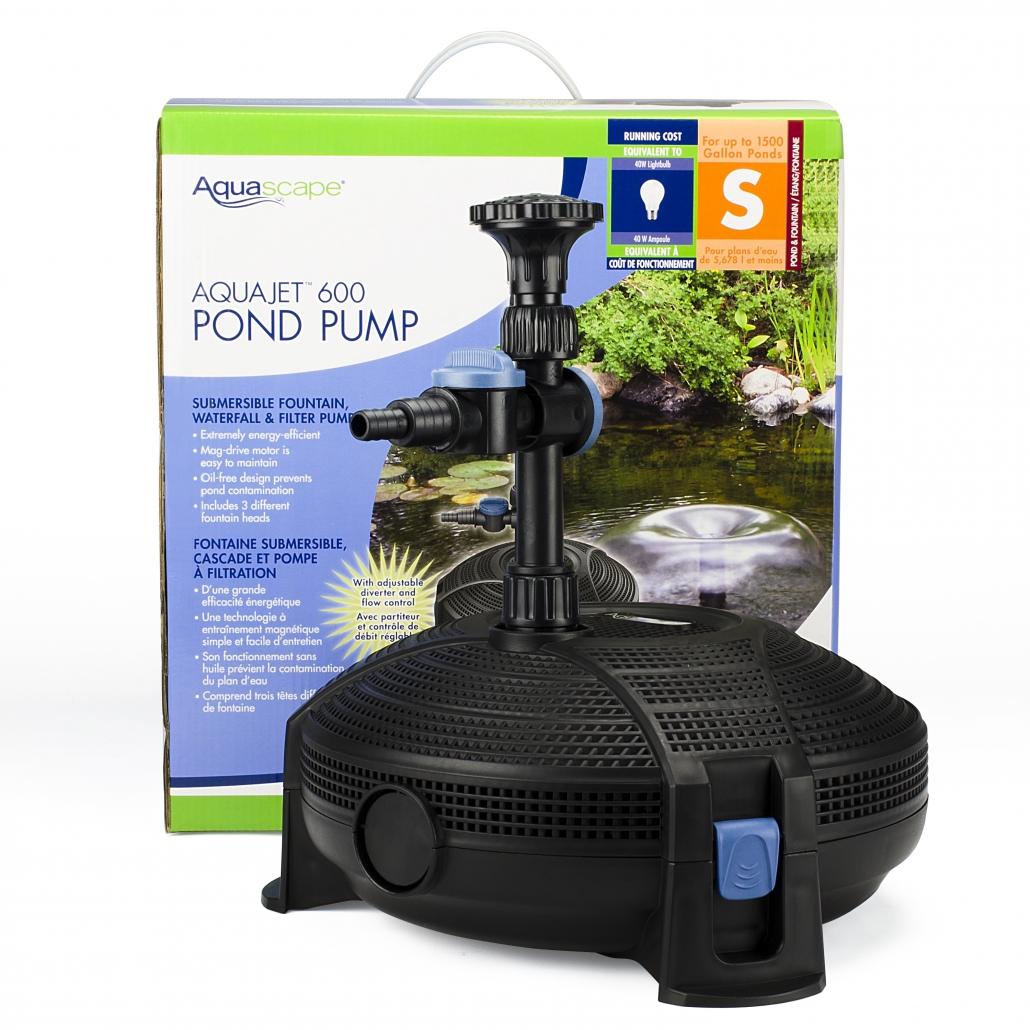
Types of Pond Water Pumps
There are two main types of pond water pumps: submersible and external (out-of-pond), also known as centrifugal pumps. Depending on the application, each pump offers specific advantages.
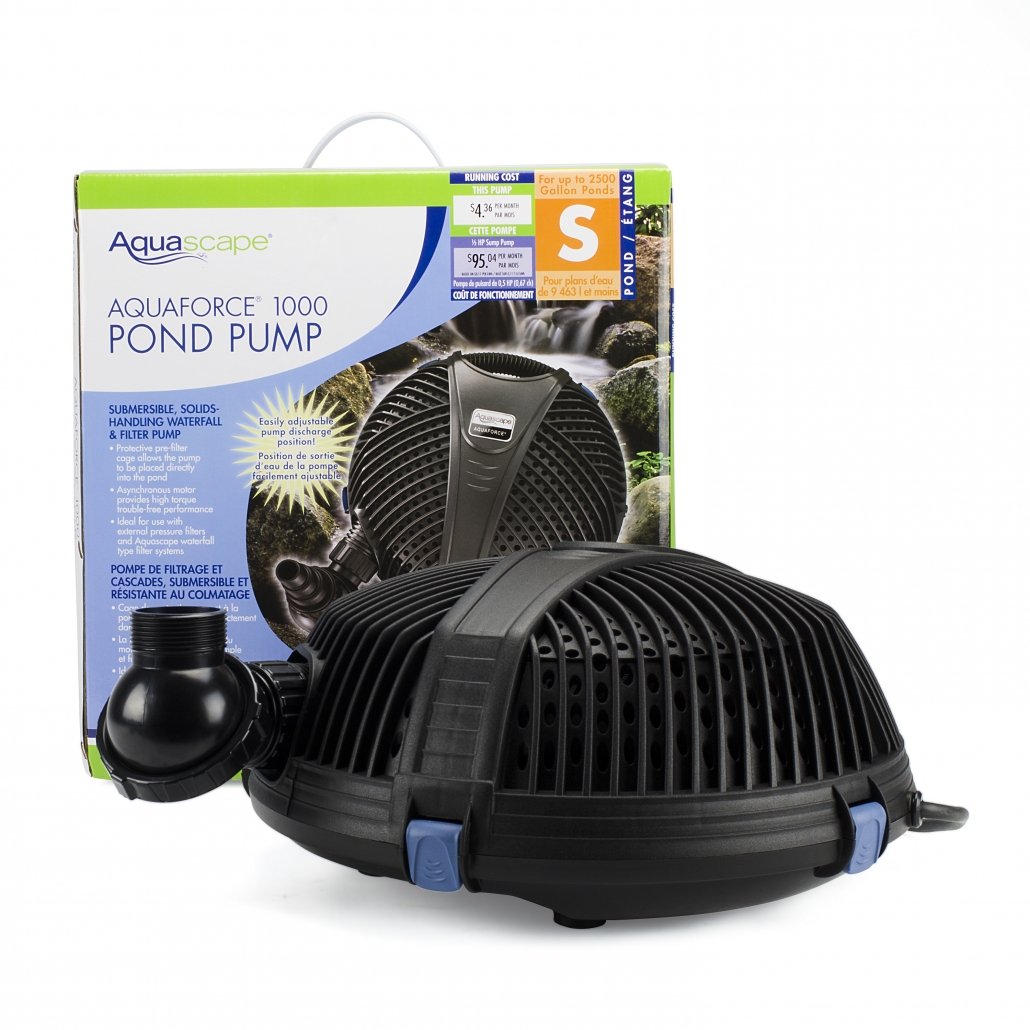
Submersible Pond Pumps
Submersible pumps are designed to be fully submerged underwater at the deepest part of the pond. They are placed directly into your pond or in a skimmer box or pond vault. Submersible pumps range in size from 50 to 5,000 gallons per hour. They are easy to install and are sometimes a more economical solution for smaller ponds (up to 1000 gallons of water). They are also quiet and can also be used to drain your pond. If you have fish or other aquatic life in your pond, you may want to consider a model that does not use oil because there is a danger of the pump seal breaking and oil coolant leaking into the water.
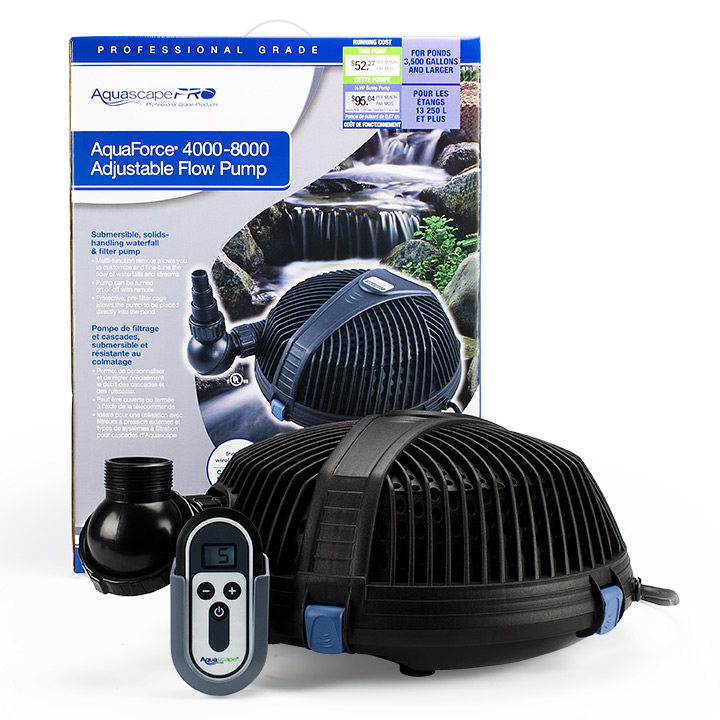
Centrifugal Pond Pumps
External or centrifugal pond pumps are a reliable, energy-efficient option. They are installed in a dry location near your pond. External pond water pumps are suitable for larger ponds (over 1000 gallons). Compared to a submersible pump, they are typically louder and more complicated to install; however, they are easier to maintain.
When selecting a pond pump, it’s essential to keep in mind that pumps have different cord lengths. Ensure the cord is long enough to go through the pond and plugin far away from the water. Some electrical codes specify that the outlet for water features must be at least 6 feet away from the water. Therefore, it is recommended that you avoid using an extension cord. However, if you must use one, make sure it’s suitable for outdoor use and plugged into a ground fault circuit interrupter (GFCI) so that it will immediately shut off if there is an overload.
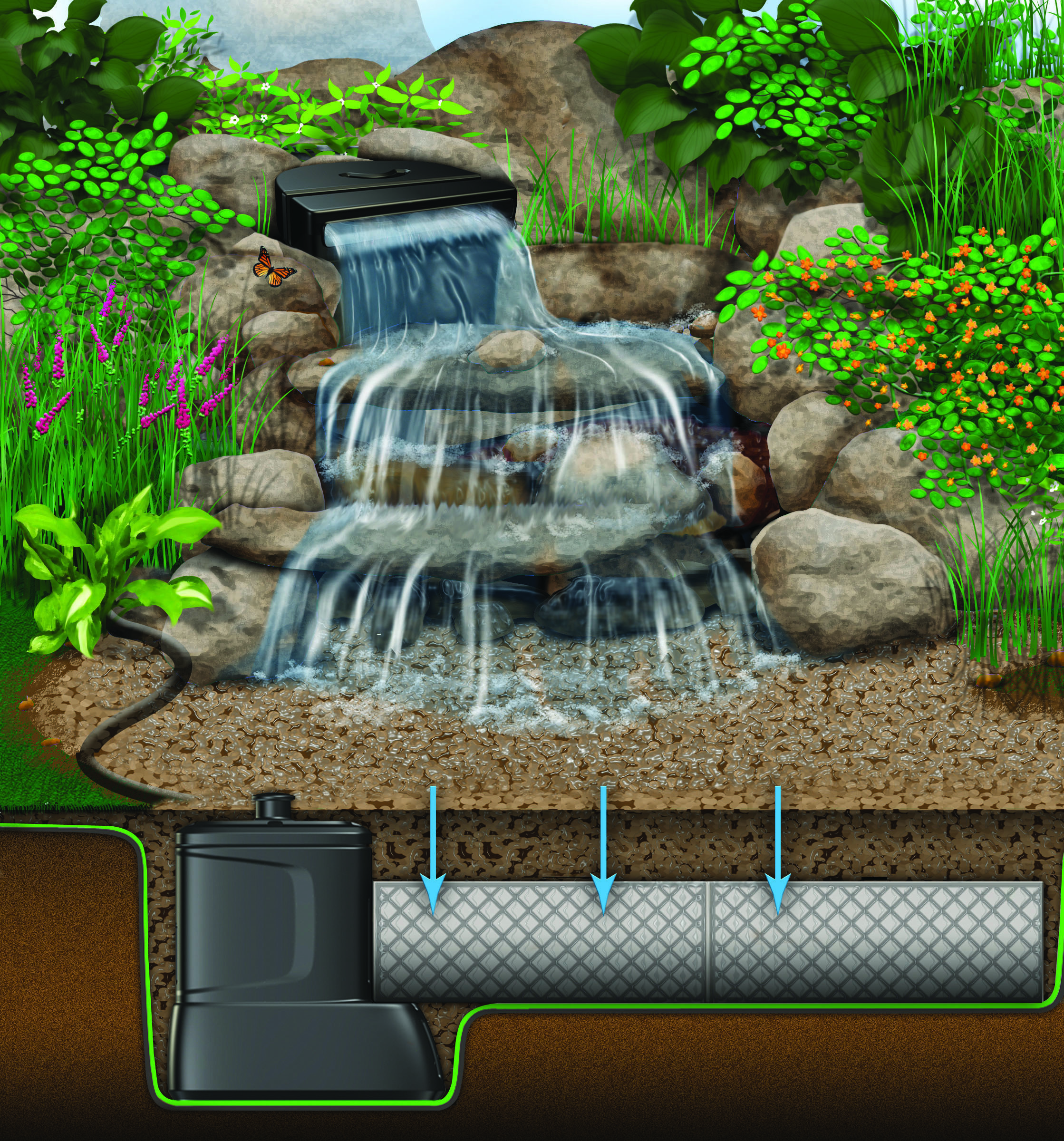
How to Size a Fountain or Pond Pump
Pond pumps are sized by gallons per hour (GPH) at one foot of lift or height. Larger capacity pumps are rated by horsepower (HP). To determine the size pond pump, first, you need to calculate the volume of water in the pond. To calculate the volume of water in gallons, multiply the length x width x average depth x 7.5.
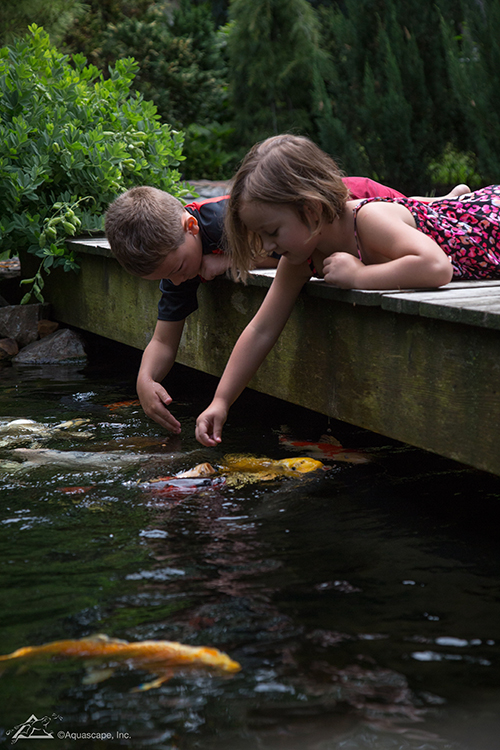
Water Circulation Factors
It is recommended that pond water is circulated at least once per hour. For example, if you have a 500-gallon pond, you need a pump that runs 500 gallons per hour at the discharge height. If your pond has a pressurized filter, you ideally want to turn the water approximately once every two hours. For example, if you have a 1000 gallon pond, you need a pond pump rated at a minimum of 500 GPH. If your pond has a skimmer or waterfall, the water should be turned approximately once every hour. Therefore, if you have an 1800 gallon pond, you will need an 1800 GPH rated pump.

Calculating Head and Lift Height
Two of the most critical measurements in sizing a pond or fountain pump are the maximum head height rating and maximum lift. Head height means the vertical height the pump raises water above the surface of the pond. The pond fountain pump’s top height can lift the water to is called “Maximum Head” or “Max Head.” The “Head” is measured straight up from the water level of the pond. Its length then measures any horizontal/diagonal flow, and 1′ of “Head” added per 10′ of horizontal/diagonal distance. To calculate the lift, you need to measure how far the water in your fountain has to travel from the pump’s location in your rush to the top of the fountain where the water comes out. Then you need to select a pump that lifts higher than that measurement. For example, if that distance is 24”, than you will need a fountain pump that lifts at least 36” tall. The “maximum lift” is the maximum height that the pump will raise the water.
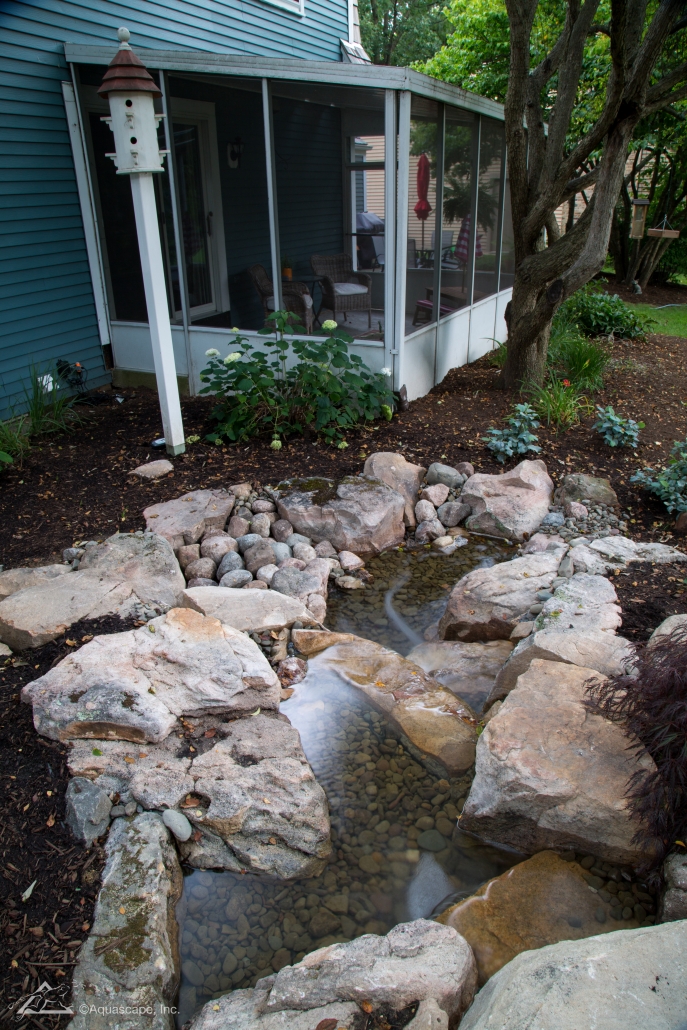
Selecting the Proper Pond Water Pump Tubing
It is also essential to use the correct tubing size because it directly affects the pond pump‘s maximum lift capability. If you use smaller tubing than specified, you will limit the pump’s maximum lift and the amount of water circulated.
Choosing the right pond water pump for your pond or fountain requires careful consideration and a little upfront research. However, doing so will go a long way toward keeping your water clean and healthy and your pump operating efficiently.
Natural Backyard Pond Irrigation
Pond Irrigation
Using a pond for landscape irrigation as opposed to a well or public water system has its positives and negatives. Pulling water from a pond to irrigate your lawn or garden can be an economical use of water as long as the pond is large enough, and self-sustaining enough through rainfall or underground springs to meet your needs. You still need a pump and piping, and you will definitely need a plan before you get started.
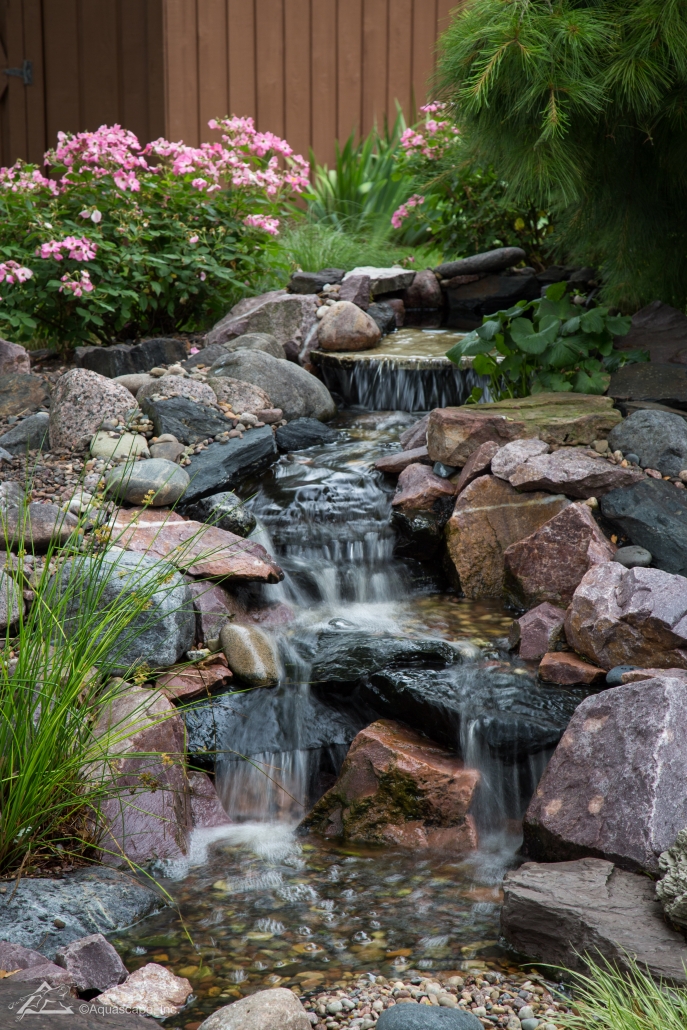
Planning
If the pond can provide enough water for irrigation, start with a scale drawing, showing all of your plants, where the pond is located and a rough sketch of either where the piping will be buried or how you plan to get the water from the pond to the plants. After you have a rough sketch, you need to make a list of the materials you will need including the pump, pipe, connecting valves and timers if the system is going to be underground. If the system is above ground, your work has just been cut in half. You also need to provide electricity to the pump or purchase a solar powered pump with a 24V battery backup system.
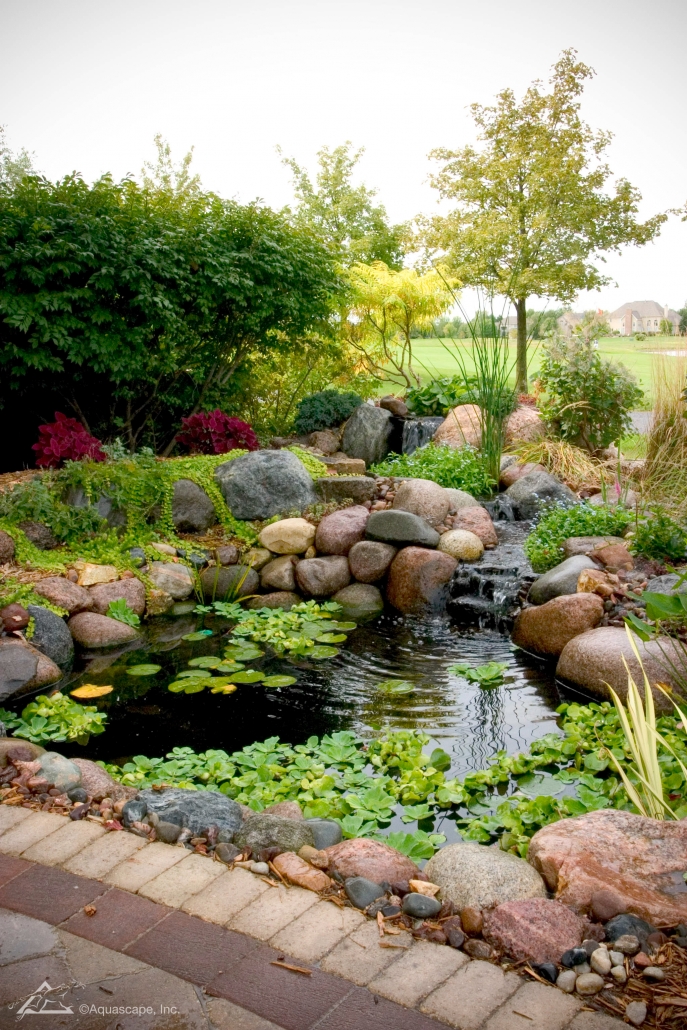
Tying Into Your Pond
Normally an irrigation system is tied to an outdoor faucet, your home’s water supply line or a brown water valve. Drawing water from a pond for irrigation involves incorporating a pump to pull the water from the pond and a means of directing the water to where you need it. A general rule of thumb is that a one acre pond can irrigate 10 acres of lawn. You can either use a submersible pump, or one that sits in a pump house to the side of the pond and pulls water and directs it through an appropriately sized pipe and control valves or hose.
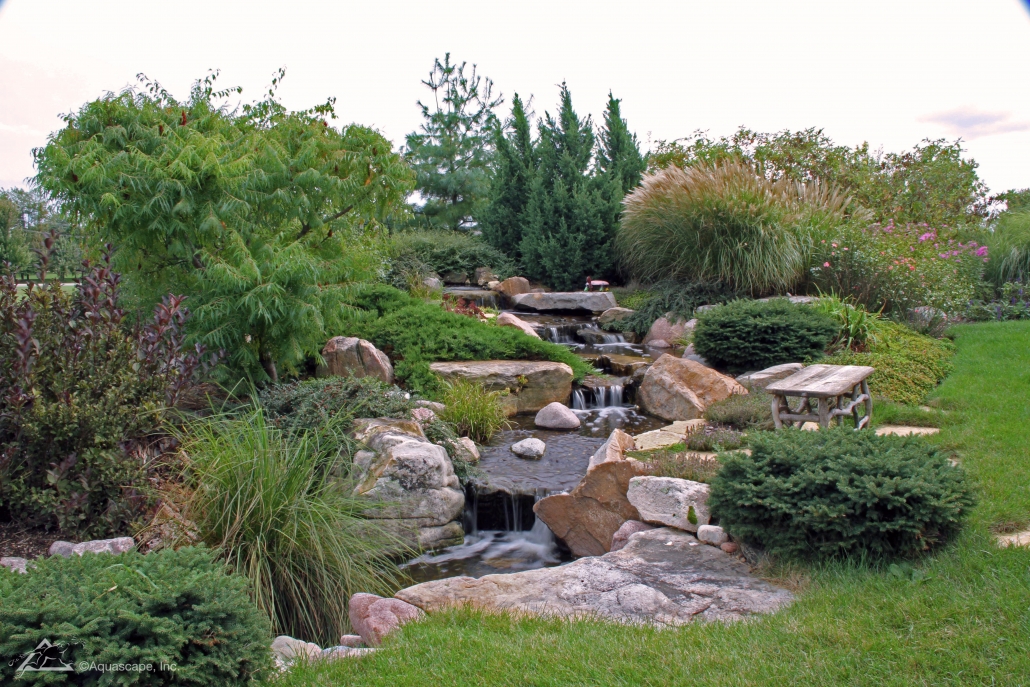
Calculating Water Need
It can be a bit difficult calculating the amount of water you have with how much water you need. While the calculations are all very scientific, an Evapotranspiration or ETO valve or irrigation controller can help make the calculations for you, but it is generally not very accurate. The formula to determine the number of gallons needed per day is: (ETO x PF–plant factor x SF– square feet to be irrigated x 0.62) / IE–irrigation efficiency = gallons of water per day. Your local extension service may also provide ETO data for your area.
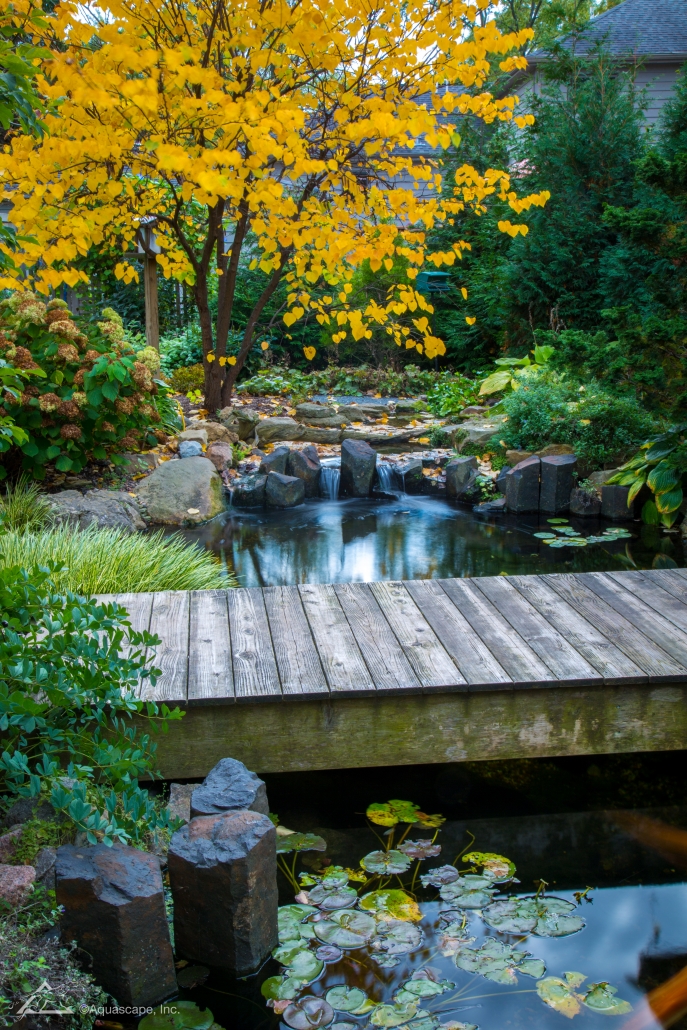
Pond Irrigation Tips
Never invest in an expensive pump, pipe, valves, timers, sprinklers hoses or anything else until you have a design plan and can accurately determine if the pond can actually meet your needs. You need this information in order to know why type of pump to buy. If you live in a dry area where you really can’t rely on the pond to provide a sufficient water supply when you need it, you can also back fill the pond from a well or cistern if necessary, but this does require another pump and more pipe.
How to Determine the Size of a Fountain for a Pond
How to Determine the Size of a Fountain for a Pond
A water fountain in the middle of a backyard pond not only adds an interesting feature, it also helps aerate the water. Pond fountains are rated by flow rate and labeled as GPH, the number of gallons of water the fountain rotates in an hour. The GPH of a pond fountain, along with the height of the water spray, are the most important features to consider when determining what size fountain you need for your pond.
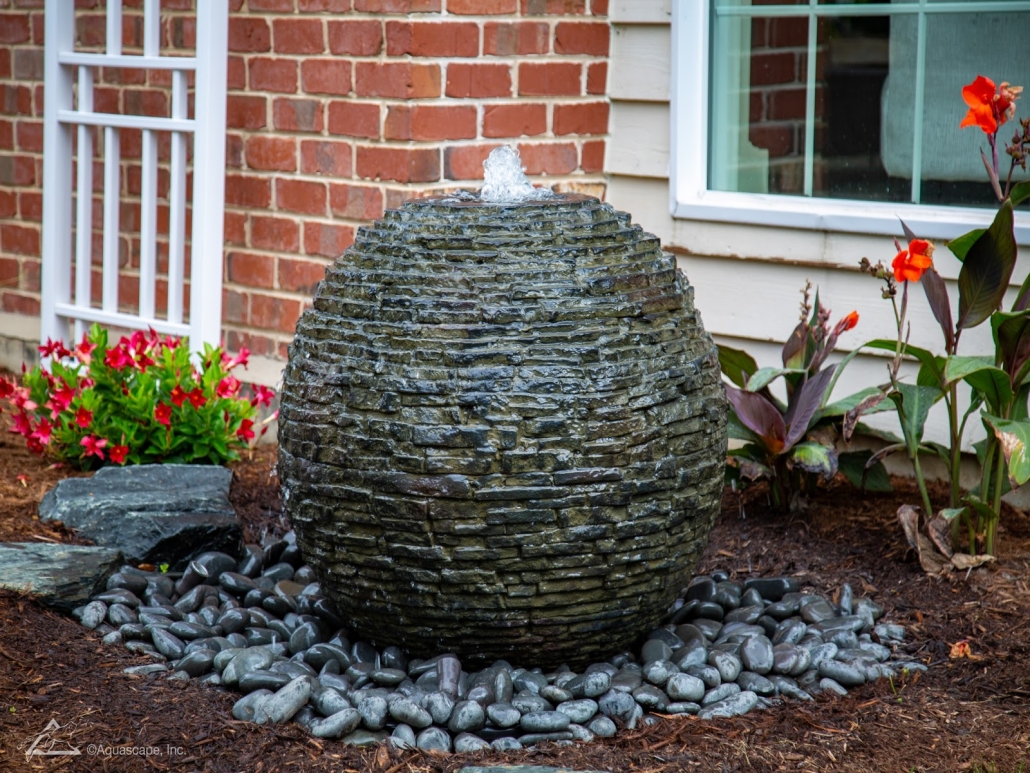
Determine the volume of your pond. If you have installed a preformed pond, refer to the owner’s manual for the total volume your pond holds. Otherwise, calculate the volume by measuring the length, width, and depth of the pond in feet and multiplying these numbers together. Then multiply the result by 7.47 to get the number of gallons your pond holds.
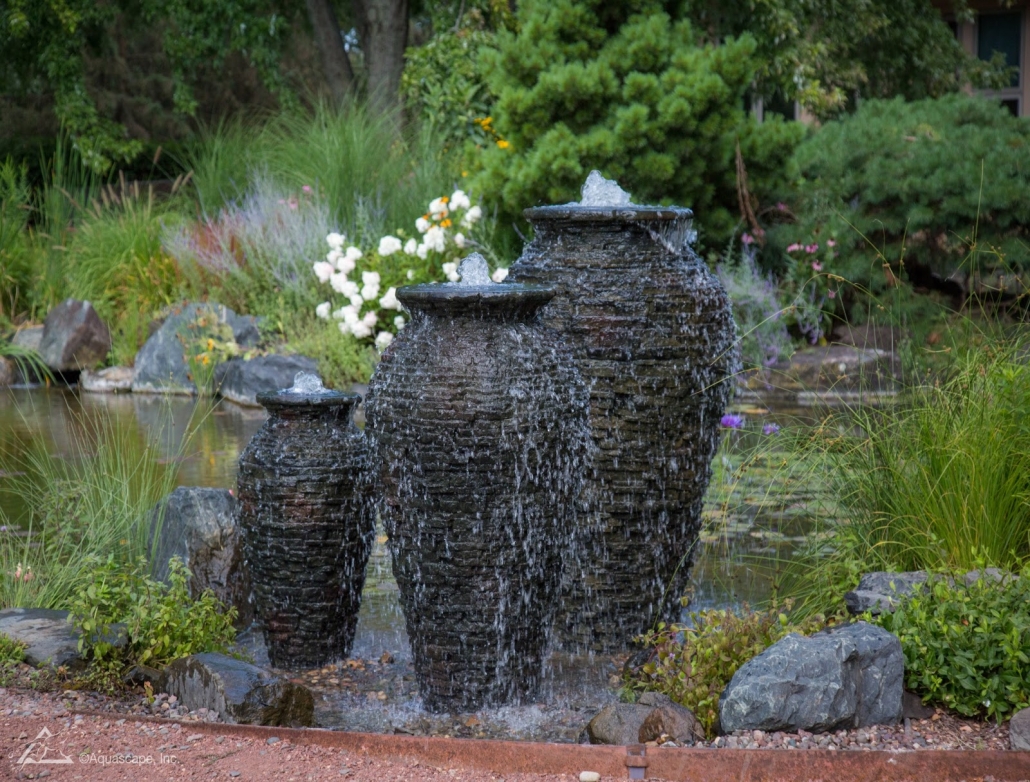
Measure how high you want the pond fountain to be. Measure from the bottom of the pond where you will place the fountain to the spot above the water that you would want the maximum height of the fountain to reach.
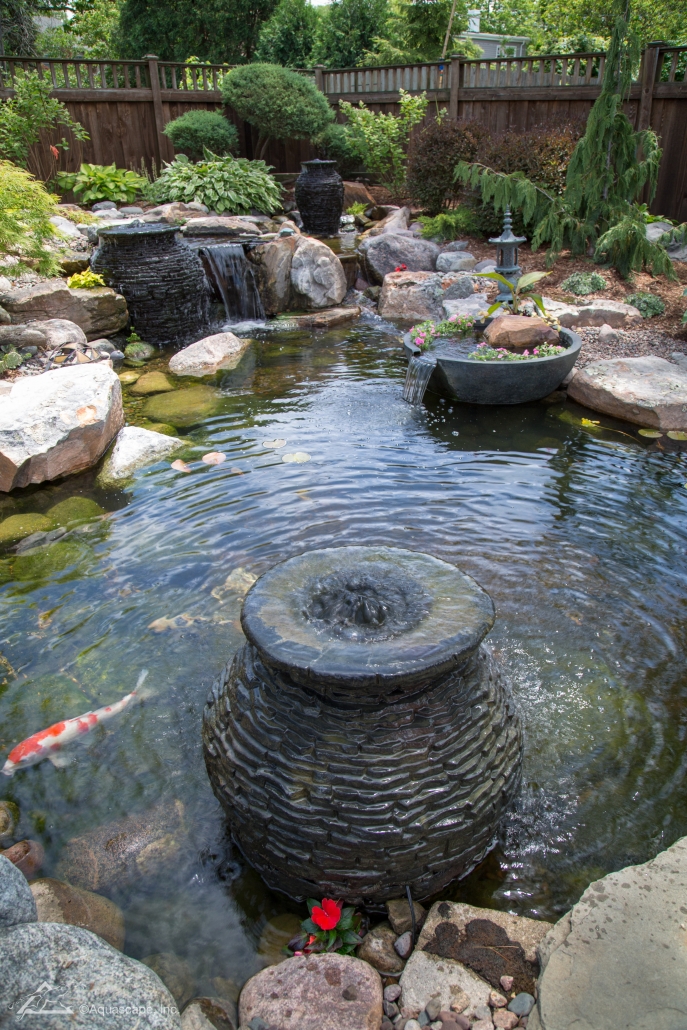
Measure the maximum diameter you would want the water spray to hit; the water should fall inside the pond and not outside it.

Read the specifications on the boxes of the pond fountain available at a pond or garden retailer. On the box you will see the fountain’s GPH rating and height of the fountain. Choose the fountain that best fits the gallons of your pond and is the right height or choose one that is rated for a pond smaller than what you have; choosing a fountain for a larger pond can make the water flow too fast for the fish in your pond. Also note how the water will spray. Fountains that have water falling straight down can work for any pond, but if the fountain sprays outward, compare the diameter to your maximum diameter measurement.
Most Efficient Pond Aerating Fountains
Most Efficient Pond Aerating Fountains
An efficient pond aerating fountain keeps your pond clean and clear by putting oxygen back into the water, which keeps algae growth to a minimum. It also inhibits the breeding of mosquitoes, while promoting a healthy aquatic environment for fish and visiting wildlife. Another bonus is that it also prevents odors normally associated with stagnant water.
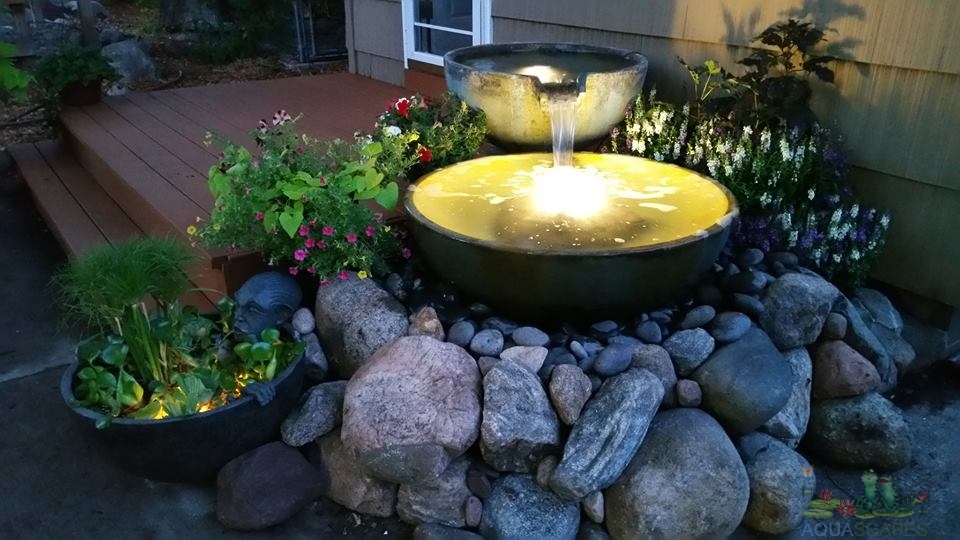
Definition
Aerating fountains, pond and pool aerators, water circulators and even pond de-icers are names often incorrectly used interchangeably for a device used to add oxygen back into pond, lake or pool water. Water circulators and de-icers move stagnant water, primarily to prevent ice damage, but are not designed for aeration. Pond aeration is the addition of oxygen to standing water due to depletion as a result of aquatic, algae and plant life consumption.
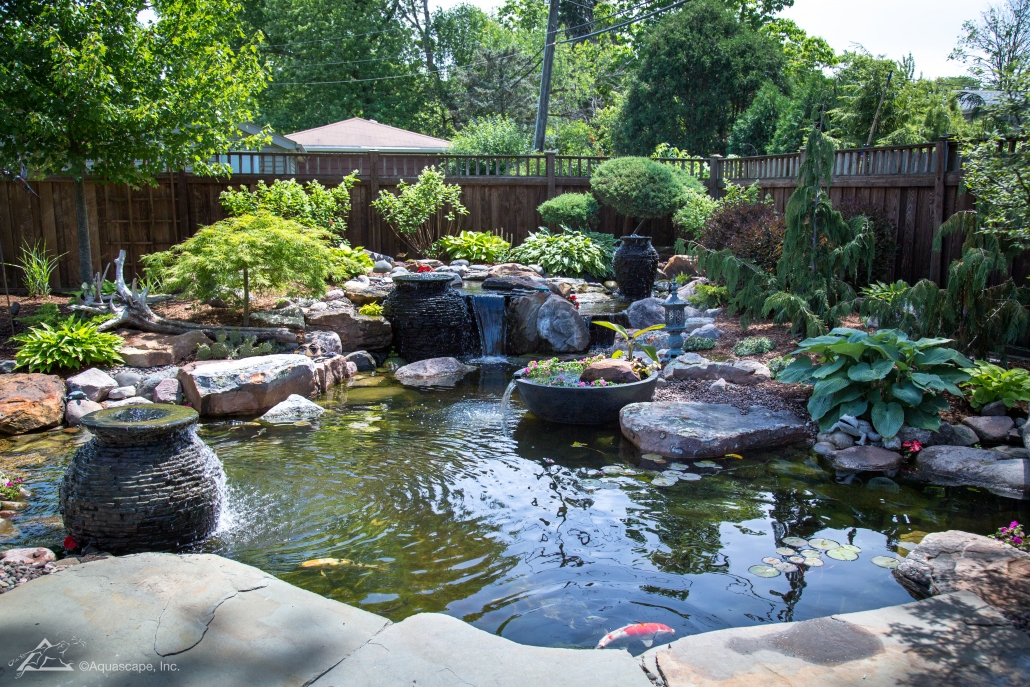
What to Look For
A one-quarter horsepower or hp aerating fountain will efficiently aerate up to a one-fifth acre pond. A one-quarter to one acre pond should have a one-half hp aerator. Aerators are also available in three-quarter, one and two hp. When purchasing an aerator, the package will list the appropriate hp for the size of pond you have. To determine the size of aerator you need, use a pond sizing calculator, don’t guess. If you choose an aerator too small for the pond, the efficiency is greatly reduced, so always err on the side of greater hp.
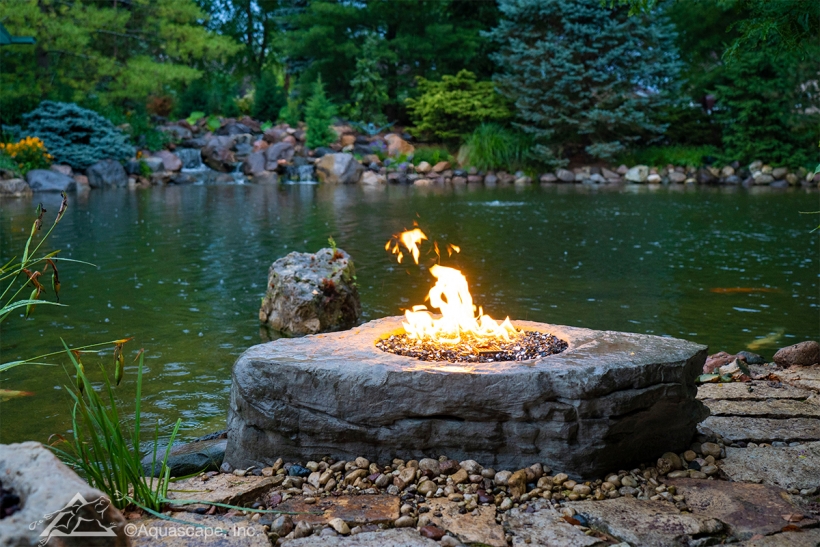
How to Determine Efficiency
Efficiency is determined by the oxygen transfer rate, which is based on the volume of water in your pond and the amount of horsepower of the aerator. An efficient aerator transfers 3 pounds of oxygen per horsepower per hour. The aerator should remain efficient even when the water level drops, though it is not wise to operate the unit in less than 12 to 15 inches of water. The constant circulation of shallow water ultimately stirs up sediment from the bottom of the pond, which eventually clogs the filter, drastically reducing the aerator’s efficiency.
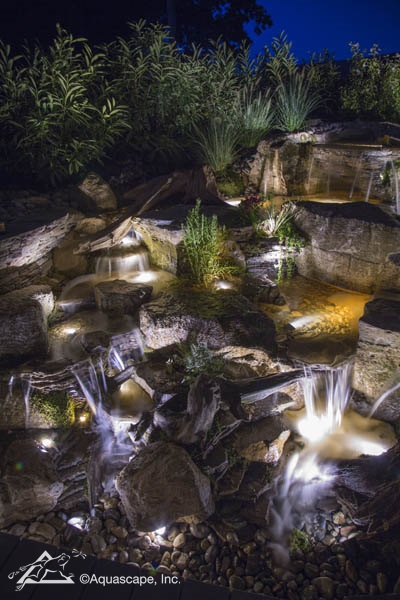
Recommended Maintenance
To improve the efficiency of your aeration system, it’s a good idea to follow the manufacturer’s recommended maintenance schedule and procedures. Because the unit is sitting in water 100 percent of the time, proper installation and maintenance not only keeps your warranty intact, it also prolongs the life of the system. Never enter a pond with an operating aerator, because of the potential for shock if the cord has degraded in any way.

